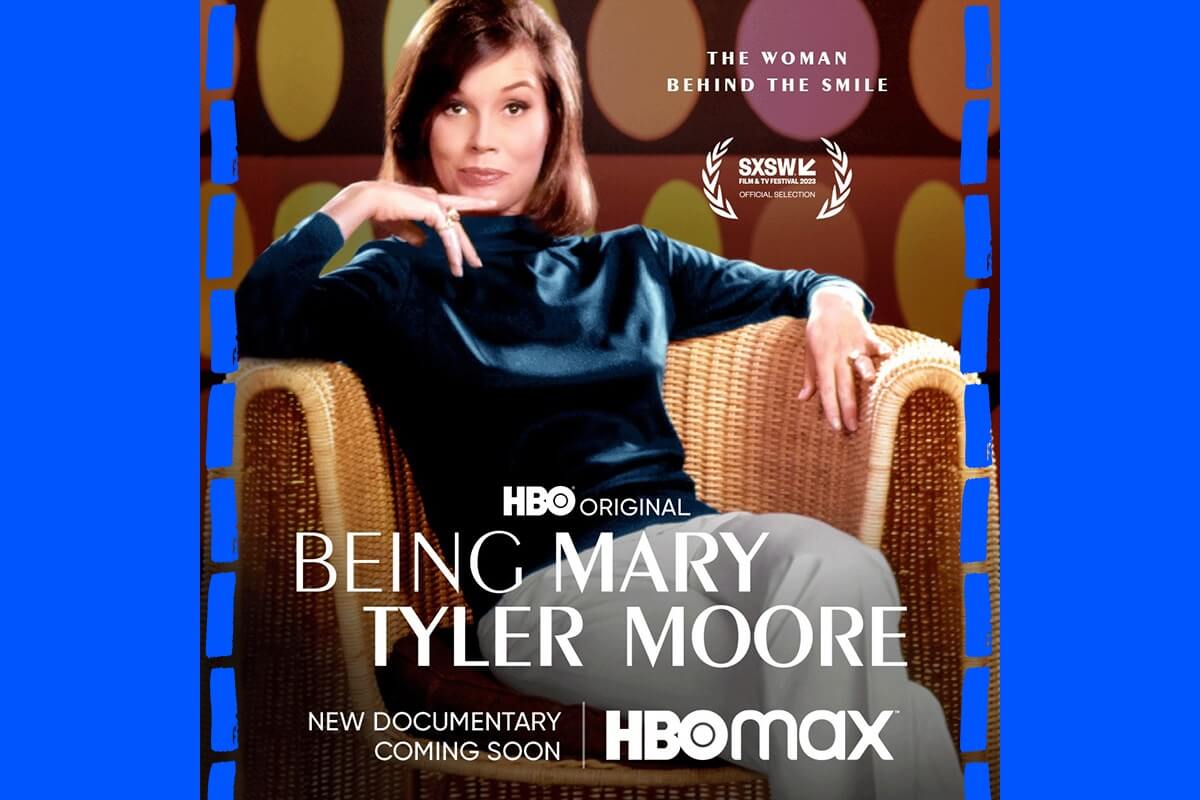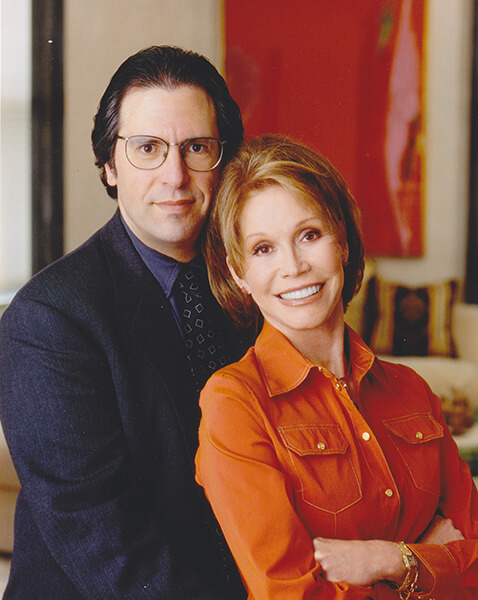
A trailblazer and cultural icon, Mary Tyler Moore had a 60-year career in show business, becoming the first woman to wear pants on primetime television and the first to portray a single woman who wasn’t focused on finding a man to marry. This was the 1960s and 1970s, and a lot has changed dramatically since then.
Read below our Q&A with Dr. S. Robert Levine, Mary’s husband, to get an inside view of the documentary, “Being Mary Tyler Moore,” and learn how Mary Tyler Moore paved the way for women to break ground in the fight for equality.
Mary was also diagnosed with type 1 diabetes (T1D) at the age of 33, and helped Breakthrough T1D raise billions of dollars to support research. Diabetes had a devastating impact on Mary’s life, including significant visual loss from diabetic eye disease.
Her experiences inspired her to tirelessly work with Breakthrough T1D to help ensure others would not have to endure the same diabetes-related burdens.
That’s what inspired S. Robert Levine, M.D., Mary’s husband of more than 30 years and longtime leading Breakthrough T1D volunteer, to create the Mary Tyler Moore Vision Initiative (MTM Vision), to find new ways to prevent the development of diabetic eye disease, stop its progression, and restore lost vision.
It was Mary’s dream that someday we would live in a world without vision loss from diabetes. MTM Vision was created to make her dream come true.
Below, read our Q&A with Dr. Levine to find out more about the MTM Vision Initiative and the documentary “Being Mary Tyler Moore,” which will premiere on HBO and begin streaming on HBO Max later this month.
Breakthrough T1D: Can you speak to the importance of the documentary and what you hope will resonate most with viewers?
Dr. Levine: “Being Mary Tyler Moore” will remind people who grew up with Mary of why they loved her and everyone else will be introduced to her extraordinary beauty, optimism, talent, determination, and influence on the television industry and society.
They will better understand how different society’s attitudes toward women were when she started out and how she became a leading agent for change, first through her role as a young housewife and mother, Laura Petrie, on The Dick Van Dyke Show, and then in a more profound way as Mary Richards of the Mary Tyler Moore Show, the first single working woman starring in a situation comedy that was not obsessed with finding a man and getting married.
I hope it will inspire a new generation of creatives to understand that the world is, indeed, “willing to receive talent with open arms” (as Mary wrote in her High School Yearbook) and that success comes through authenticity, grace, never failing to offer a smile, and the “spunk” to fight for what you believe.
Breakthrough T1D: How did type 1 diabetes impact Mary’s career?
Dr. Levine: Mary was a fighter. She rose to every challenge. She believed anything was possible and didn’t let anything get in the way of achieving her goals. This did not change when she was diagnosed with type 1 diabetes in 1970, when she was just starting to work on the Mary Tyler Moore Show.
She remained optimistic and intentional and took the necessary actions to best care for herself—as best was known back in the 70s and 80s—and pushed forward.
The great success of the Mary Tyler Moore Show and her later accomplishments* were after her type 1 diabetes diagnosis.
Breakthrough T1D: How did diabetic eye disease impact Mary’s life?
 Dr. Levine: Mary suffered from a number of the serious complications of diabetes, but what she was never able to overcome was the vision stealing impact of her diabetic eye disease. Indeed, over time, it became a great challenge for her to simply walk across a room and avoid obstacles, or judge changes in grades, or walk downstairs, or be physically active in low light, making a once curious, always learning, fiercely independent woman to be unable to get around on her own, unable to read, unable to work, unable to sustain her autonomy.
Dr. Levine: Mary suffered from a number of the serious complications of diabetes, but what she was never able to overcome was the vision stealing impact of her diabetic eye disease. Indeed, over time, it became a great challenge for her to simply walk across a room and avoid obstacles, or judge changes in grades, or walk downstairs, or be physically active in low light, making a once curious, always learning, fiercely independent woman to be unable to get around on her own, unable to read, unable to work, unable to sustain her autonomy.
Breakthrough T1D: What inspired you to create the Mary Tyler Moore Vision Initiative (MTM Vision)?
Dr. Levine: Despite all the challenges she faced from the complications of diabetes, Mary worked to ensure that someday in the future others, such as the children with type 1 diabetes she met through her work with Breakthrough T1D, would not have to suffer the same burdens of diabetes as she had. Sadly, the problem of vision loss in people with diabetes persists, including in young adults, because doctors don’t have the needed tools or new treatments. They still use the same treatments as Mary received 40 years ago: laser therapy and vitrectomy.
Diabetes remains the number one cause of vision loss and blindness in working-age adults, worldwide. And if you ask people with diabetes what they most fear, too often the answer is vision loss and blindness. There is, therefore, a great need for bold efforts to find new cures and preventive treatments for diabetic eye disease. It was Mary’s dream that someday we would live in a world without vision loss from diabetes, and MTM Vision was created to make her dream come true.
Breakthrough T1D: What is the mission and purpose of MTM Vision?
Dr. Levine: The mission of MTM Vision is to accelerate the development of new methods to preserve and restore vision in people with diabetes, including in those with significant visual loss. Our purpose is to ensure that people with diabetes can live joyful and independent lives free from the fear and suffering of vision loss. See marytylermoore.org to learn more.
*Mary’s many accomplishments include an Oscar nomination for her role in Ordinary People, a Tony Award for her leading role in “Whose Life is it Anyway” on Broadway, multiple Emmy, Golden Globe, and People’s Choice Awards, going to Africa for a photo safari, traveling the world for location shoots, and her extraordinary accomplishments as Breakthrough T1D’s International Chairman as a diabetes research advocate.